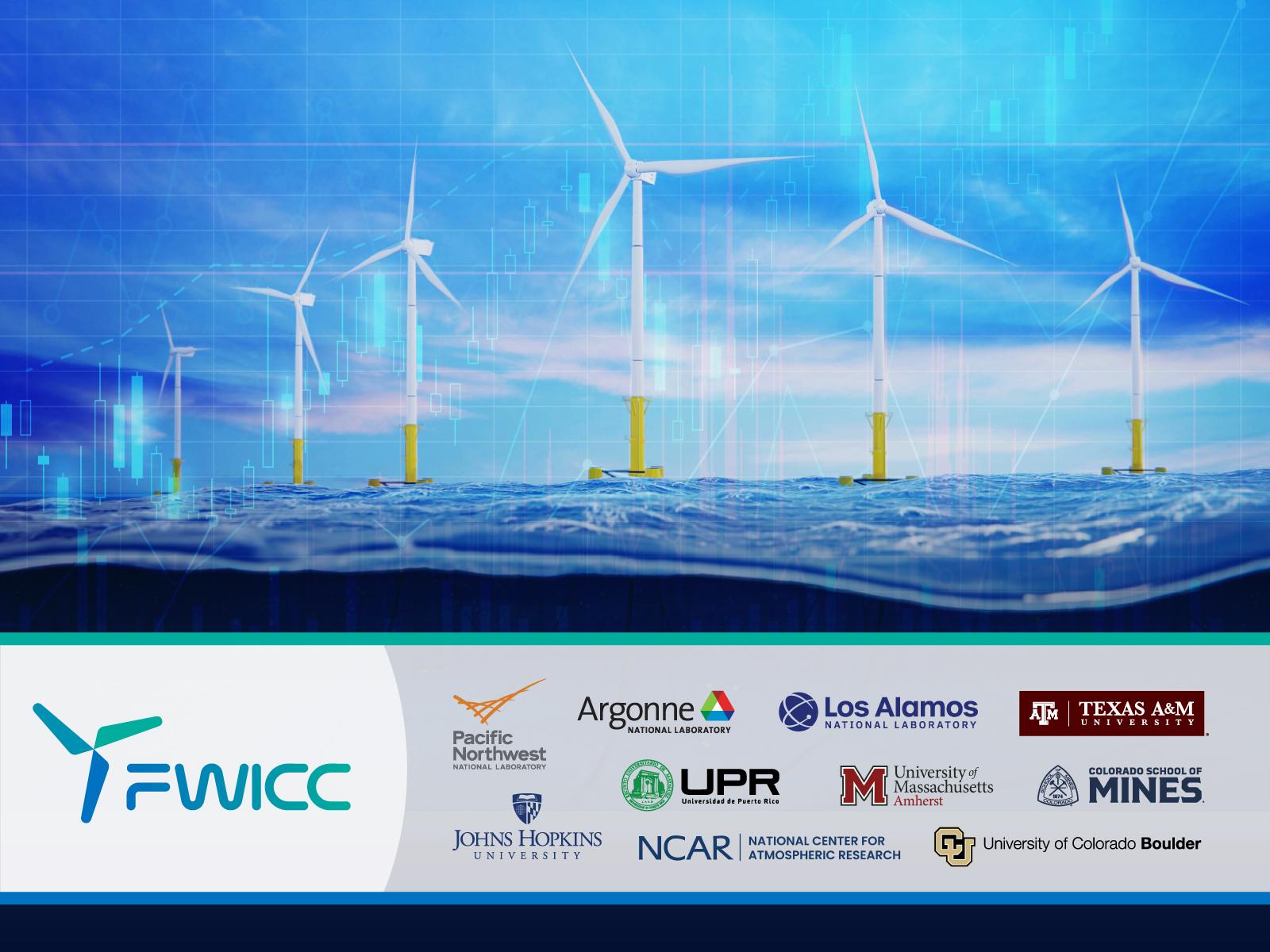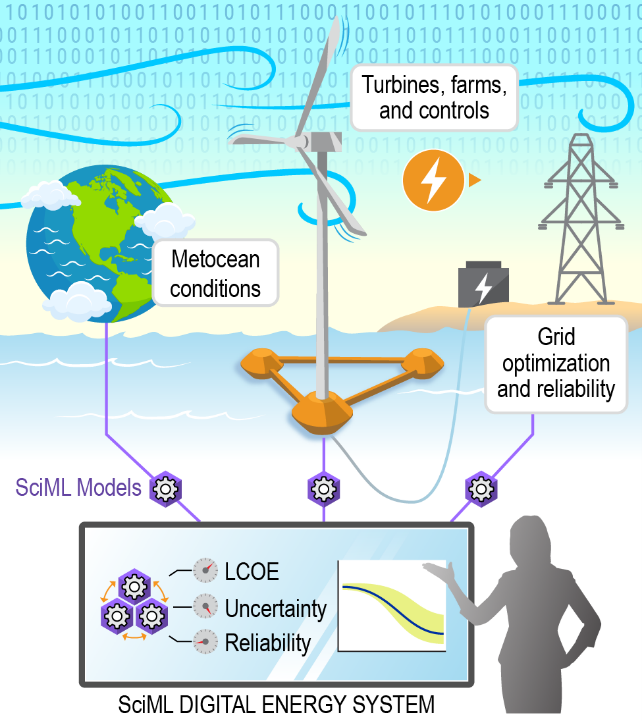Addressing Challenges in Energy: Floating Wind in a Changing Climate
Addressing Challenges in Energy: Floating Wind in a Changing Climate (ACE-FWICC) is an Energy Earthshot Research Center featuring an interdisciplinary team that will develop a new understanding of meteorological and oceanic conditions to advance the design, control, and grid integration of floating offshore wind using scientific machine learning (SciML).

ACE-FWICC Partners
Argonne National LaboratoryColorado School of Mines Johns Hopkins UniversityLos Alamos National LaboratoryPacific Northwest National LaboratoryThe National Center for Atmospheric ResearchThe University of Colorado, Boulder The University of Massachusetts AmherstThe University of Puerto Rico at MayagüezTexas A&M University
